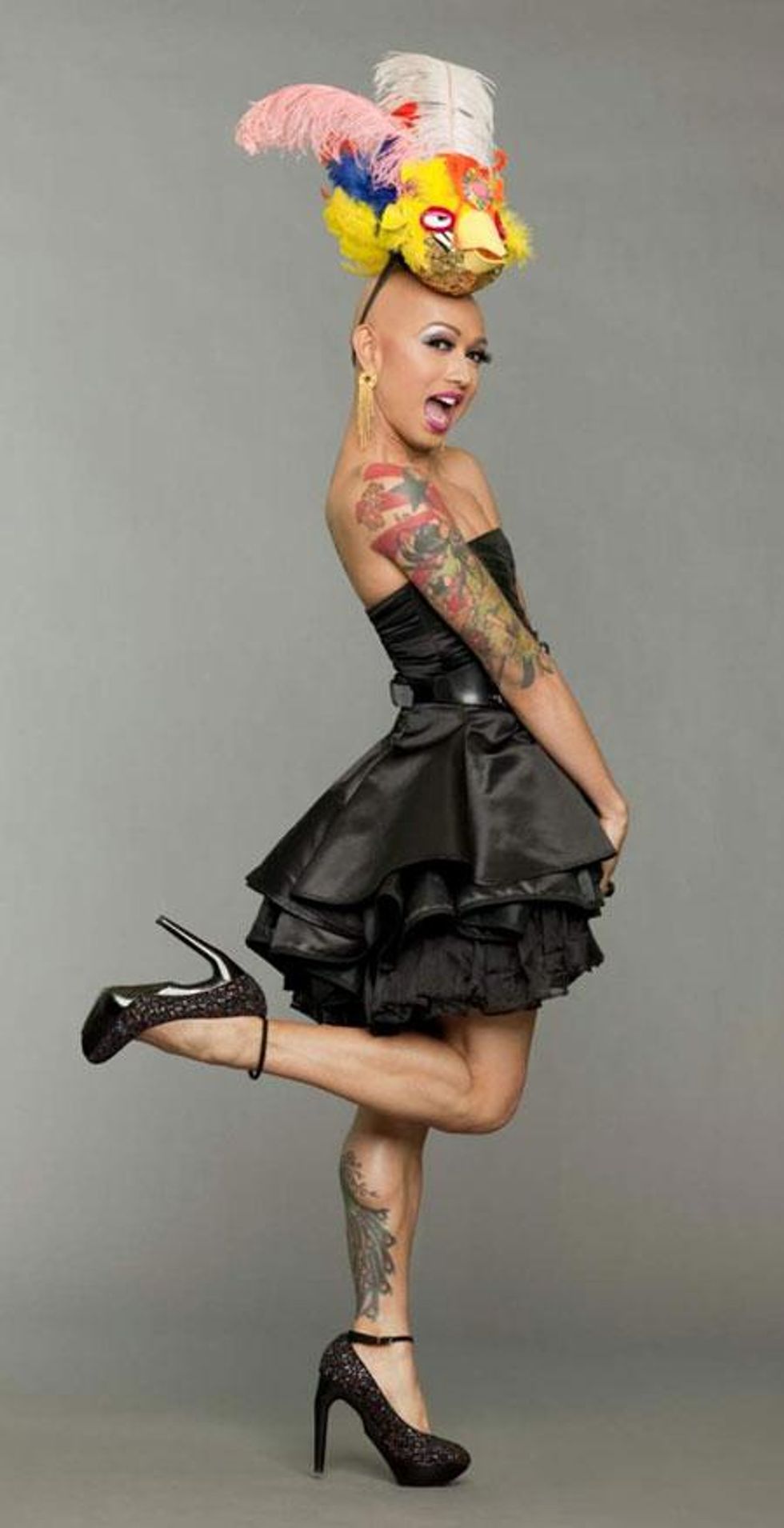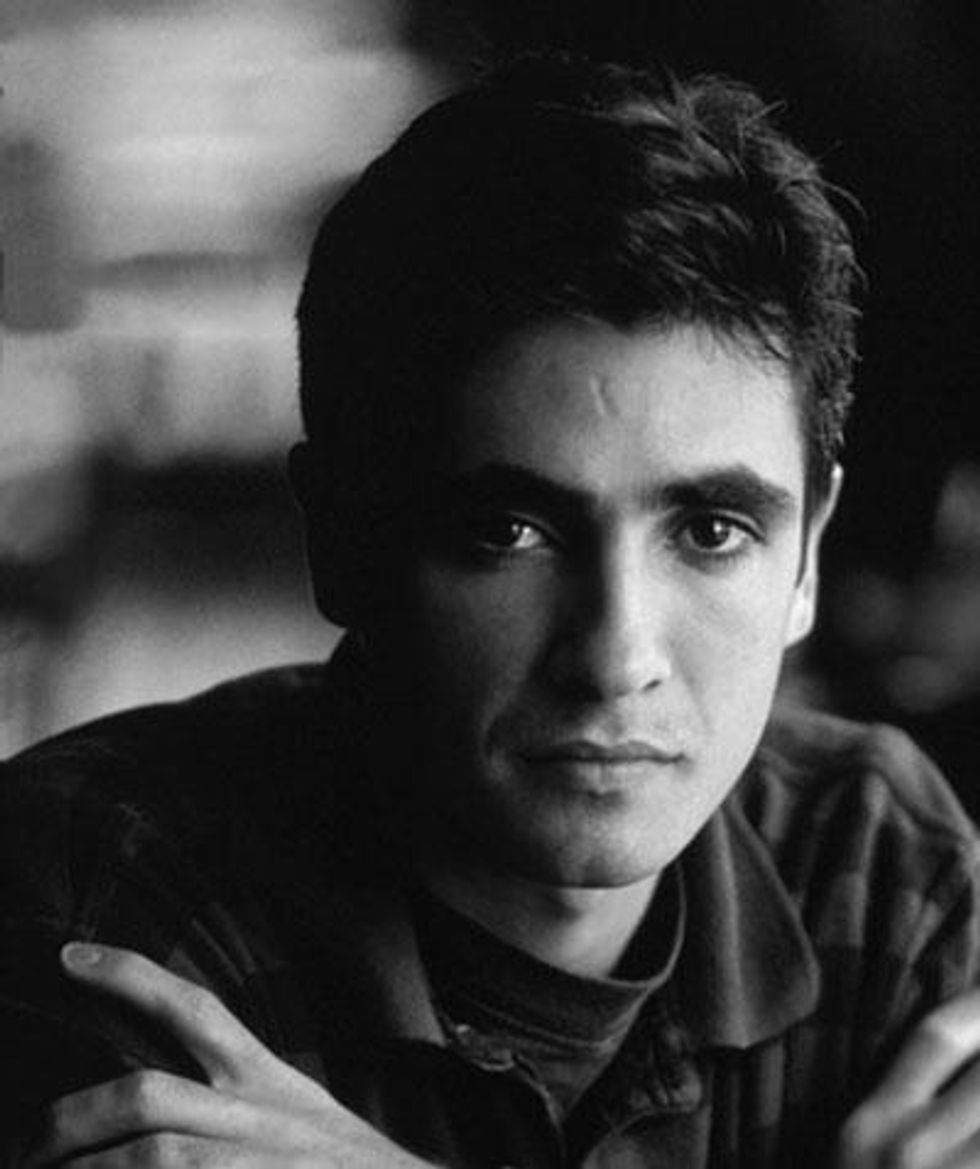
What is it about reality TV that makes it fertile ground for HIV-positive celebrities?
November 13 2012 7:05 AM EST
By continuing to use our site, you agree to our Privacy Policy and Terms of Use.

Now HIV-positive people are nearly impossible to find in movies or on scripted television. But there is a bright spot, and it’s on the small screen. For the past few years reality television has offered up at least half a dozen HIV-positive role models. Project Runway’s Jack Mackenroth and Mondo Guerra (shown above), Ongina from RuPaul’s Drag Race, Jamar Rogers from The Voice, David Munk on Sundance’s Girls Who Like Boys Who Like Boys, and John Gray from Bravo’s Top Design are not only accomplished in their careers, but many are also advocates for research and education, and speak out often against HIV stigma and discrimination.
At 2011’s U.S. Conference on AIDS, Mackenroth and Guerra promoted the Living Positive by Design campaign, sponsored by Merck. The two entrepreneurs talked with convention attendees about how people with HIV can maintain a positive outlook on life and how important it is to keep up with doctor’s appointments. Guerra, who won this year’s Project Runway All Stars, even participated in one of the conference’s most high-profile discussions.
“[Mackenroth and I] really want to convey to people living with the disease to continue to have a positive outlook on life,” Guerra tells HIV Plus. “It’s a really simple message, but a really important one that someone living with HIV may forget on a day-to-day basis.”
Mackenroth, who appeared on Project Runway’s fourth season and disclosed his status publicly after leaving the show for health reasons (not HIV-related), just launched Volttage.com, a dating and social networking site for HIV-positive men. Since leaving that show, he’s never shied away from discussing his status and using his celebrity to battle ignorance.
“I’m not good at holding on to personal secrets, and I’m quite uncensored and outspoken,” Mackenroth says. “However, I can completely understand why others have difficulty with disclosure because of the massive stigma of living with HIV. I’ve had my share of unpleasant reactions, but it doesn’t bother me. I try to use those experiences as a chance to educate someone.”

“It’s important that people with HIV are represented in a positive way, because being HIV-positive is not easy,” Ongina says. “People should continue to get care and attention if they are positive and stay well-protected and educated if they are negative.”
So why has reality TV produced so many HIV-positive celebrities, while actors and other high-profile people with the disease—models, athletes, fashion designers—seem so reluctant to disclose?
“[Many reality TV personalities] never expected or aspired to be actors or celebrities, so our personas are not preconceived or contrived,” says Mackenroth, discussing why reality TV produces HIV-positive role models, rather than more traditional entertainment. Since some reality contestants are less concerned about their image, Mackenroth suggests, they’re less frightened about coming forward about their status.
Judging from the popularity of reality shows, people are invested in the personalities who appear on them. That attachment may make it more powerful, as opposed to celebrities who live their personal lives off-camera, when they disclose publicly.
“I think in some ways people have a closer connection to reality TV stars versus scripted TV/film actors,” Ongina says. “It’s more relatable when someone is watching reality TV and the person comes out as HIV-positive. It feels authentic.”

Zamora’s boyfriend at the end of his life was Sean Sasser, who appeared frequently on The Real World—the two men even had a wedding ceremony on the show. Sasser, now a pastry chef living in Portland, Ore., says his decision to showcase his life with Zamora on The Real World was something he didn’t spend much time thinking about.
“I was just being who I was at the time,” Sasser recalls. “Those of us afforded the opportunity to be on television see that it’s easier to just be honest with everything that we are, and HIV is just one of many different things you reveal about yourself when you’re in a reality TV situation.”
Eighteen years after appearing on The Real World, Sasser says HIV stigma is still intense, so much so that even female reality stars candid about their HIV are basically nonexistent, both he and Ongina acknowledge.
Maybe it will take reality stars leading the way for HIV-positive celebrities from film and scripted TV—and female reality stars—to follow suit. One thing is certain, seeing representations of HIV-positive people living full, healthy lives can radically alter perspectives for those living with the disease.
“If everyone came out about their status, it would diminish the stigma and draw attention to the need for a cure,” Mackenroth says. “It would also help dispel the many myths of living with HIV and take away much of the fears surrounding disclosure, treatment, and testing.”